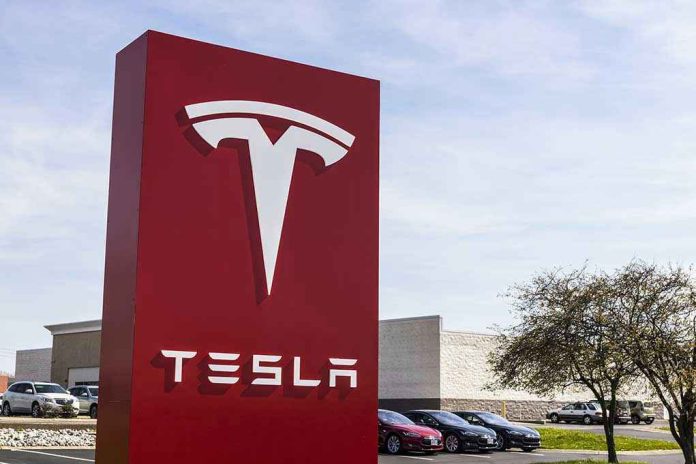
While Tesla finally opened its gleaming new showroom in Mumbai, the sky-high price tag ensures most Indians will only see a Model Y behind velvet ropes, not in their own driveway.
At a Glance
- Tesla’s first Indian showroom debuts in Mumbai’s exclusive Bandra Kurla Complex, targeting luxury buyers.
- Model Y’s starting price of roughly $68,000 puts it out of reach for the vast majority of Indian consumers.
- Import duty cuts were tied to a promise of local manufacturing, but Tesla has no immediate plans for an Indian factory.
- India’s EV market remains dominated by affordable domestic brands, leaving Tesla in a niche luxury segment.
Tesla Parks in India’s Wealthiest Lane—Middle Class Need Not Apply
After years of speculation, dashed hopes, and more policy wrangling than a Capitol Hill filibuster, Tesla finally put down stakes in India. Musk’s team unveiled its first showroom on July 15, 2025, in Mumbai’s ultra-posh Bandra Kurla Complex, making a clear statement: this is a luxury play from the start. The “Experience Centre” showcases the Model Y—imported straight from Shanghai—decked out for the country’s elite, who shop for cars the way most Indians shop for cell phones. The Model Y RWD starts at a wallet-busting ₹59,89,000, or about $68,000, with the long-range version climbing to ₹67,89,000, or $79,000. For everyone keeping score at home, the average Indian’s annual income is a tiny fraction of that sticker shock.
Even the process to order reeks of exclusivity: only residents of Delhi, Gurugram, and Mumbai can register, and you’ll fork over a nonrefundable ₹22,220 deposit—enough to buy an entry-level motorcycle in India. Deliveries for the rear-wheel drive Model Y are expected in the third quarter, with the long-range version to follow later in the year. Tesla’s approach is pure luxury, and for now, there’s no sign the company will compete with the mass-market EVs from Tata Motors or Mahindra, which actually sell to the vast majority of Indian drivers. Instead, Tesla’s main competition is the other German luxury brands—BMW, Mercedes, Audi—already fighting for the same tiny one percent of Indian car buyers.
Government Bends—Tesla Doesn’t Break
The Indian government, desperate to put itself on the global clean energy stage, bent over backwards to lure Tesla with new import duty cuts. After a 2025 meeting between Prime Minister Modi and Elon Musk, India agreed to slash import taxes from a punishing 100% down to 15% for EVs priced under $35,000, if—and it’s a big if—the automaker builds a factory in India within three years. That’s the kind of deal any American automaker would kill for back home, and it’s supposed to bring jobs, tech, and investment. But what did India get in return? A showroom selling imported cars for twice the local price, and a vague promise that Tesla might “consider” local manufacturing someday.
Musk cancelled his planned April 2025 visit to India, giving China priority instead, and the company has since made it clear: no factory plans on the horizon. This leaves Indian officials holding the bag, while Tesla enjoys duty cuts and luxury branding. The “Make in India” dream is, for now, just that—a dream.
Who Actually Wins? Not the Indian Middle Class
For India’s millions of upwardly mobile strivers, Tesla’s arrival is a glossy distraction, not a realistic option. The government hails Tesla’s investment as a sign that India is open for global business, but the reality is that only the ultra-rich will be parking Model Ys in their gated driveways. Meanwhile, the real EV market in India is being built on affordable, homegrown brands that deliver value for money, not California cool. Tesla’s high prices and lack of local manufacturing mean the broader Indian public sees little benefit—no jobs, no price competition, and certainly no affordable electric cars.
Investors may see a boost in confidence, and the rich will have a new status symbol to flaunt, but the majority of Indians will be left behind. Until Tesla brings prices down and commits to making cars in India, this so-called “landmark entry” is just another example of global corporations cashing in on government incentives while doing little for the average citizen. Sound familiar?





